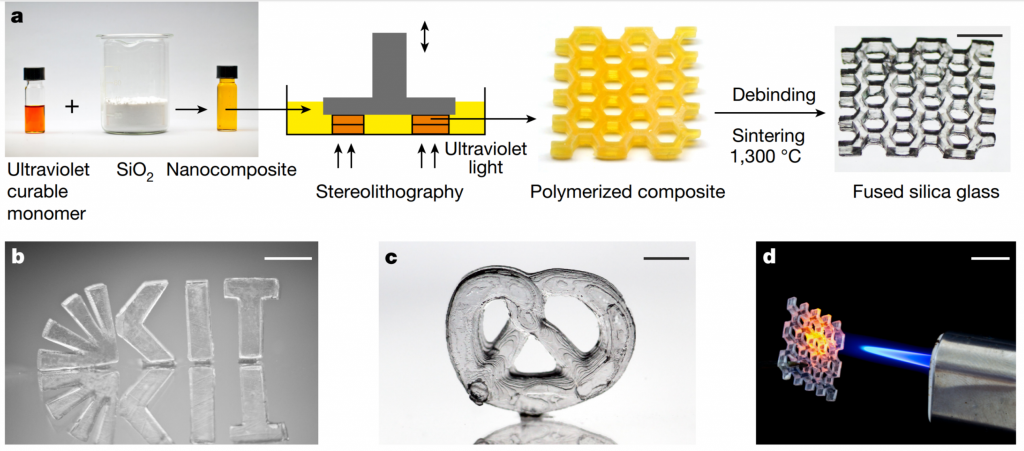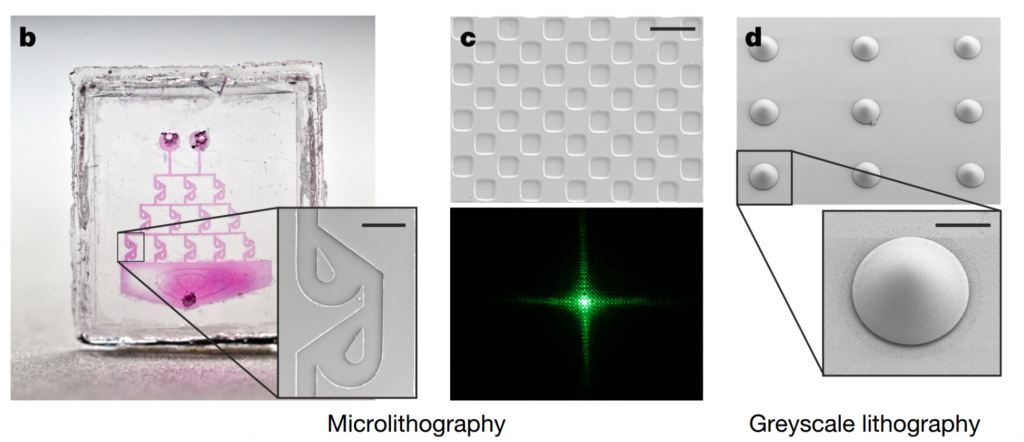3D printing with glass takes another advance with the publication of new research from a team of scientists based in Germany.
While this is not the first time 3D printing with glass has been achieved, the reported levels of transparency and resolution are remarkable.Speaking to the New York Times, MIT’s Dr. Neri Oxman described the work as, “the most detailed demonstration we have seen of the stereolithography technology.”
The authors of the study, published today in Nature, work at the Institute of Microstructure Technology (IMT), Karlsruhe Institute of Technology (KIT), Institute for Applied Materials (IAM) and Institute for Nuclear Waste Disposal (INE).

An introduction to the paper explains that, “glasses and especially high-purity glasses such as fused silica glass are notoriously difficult to shape.” Using 3D printing to work with glass has been demonstrated by Belgium’s Luxexcel, who recently met ISO standards for their 3D printed optical lenses and have worked with the material since 2009.
Other additive manufacturing projects using glass include the Micron3DP printer and Dr. Oxman’s work at MIT.
Materials science is key
The German research team used a, “custom-built micro(stereo-)lithography system based on a digital mirror device” to fabricate transparent fused silica glass components at resolutions of a few tens of micrometres.
Materials science is a driving force behind the advance of additive manufacturing and the researchers explain that the, “basis for this work is a nanocomposite that we developed for bulk polymerization.” An ultraviolet-curable monomer mixed with amorphous silica nanopowder was developed by the researchers and then structured with stereolithography system.
This process, “produces surfaces of optical clarity and reflectivity suitable for the design of optical components such as lenses and filters.” Experiments using the method report the,
Index-matched microstereolithography nanocomposite shows an optical transmission of approximately 66% at a wavelength of 365nm (i-line; the processing wavelength), whereas the blurry casting nanocomposite has a transparency of only roughly 4%.
Nanocomposite material for 3D printing fused silica glass
The paper describes how using the nanocomposites, “yields glass feature resolutions and structure quality fully compatible with the demands of microelectromechanical systems (MEMS), microoptical and microfluidic applications.” Specifically 3D printing using this methods permits the fabrication of, “sharp edges that cannot be achieved with classical glass-structuring techniques.”
After 3D printing, post-processing in the form of debinding and sintering at 1,300 °C is required to produce the fused silica glass. The paper concludes that the process will, “enable the construction of complex shapes of highly transparent, temperature- and chemical-resistant glass on the macro- and microscale.”

The authors of Three-dimensional printing of transparent fused silica glass are Frederik Kotz, Karl Arnold, Werner Bauer, Dieter Schild, Nico Keller, Kai Sachsenheimer, Tobias M. Nargang, Christiane Richter, Dorothea Helmer & Bastian E. Rapp.
For all the latest 3D printing news, subscribe to our free newsletter here and follow our active social media accounts.
Also, don’t forget that 3D Printing Industry readers can vote now in the 1st Annual 3D Printing Industry Awards.
Featured image shows 3D Printing Glass by Karlsruhe Institute of Technology (KIT). Photo via Nature.



